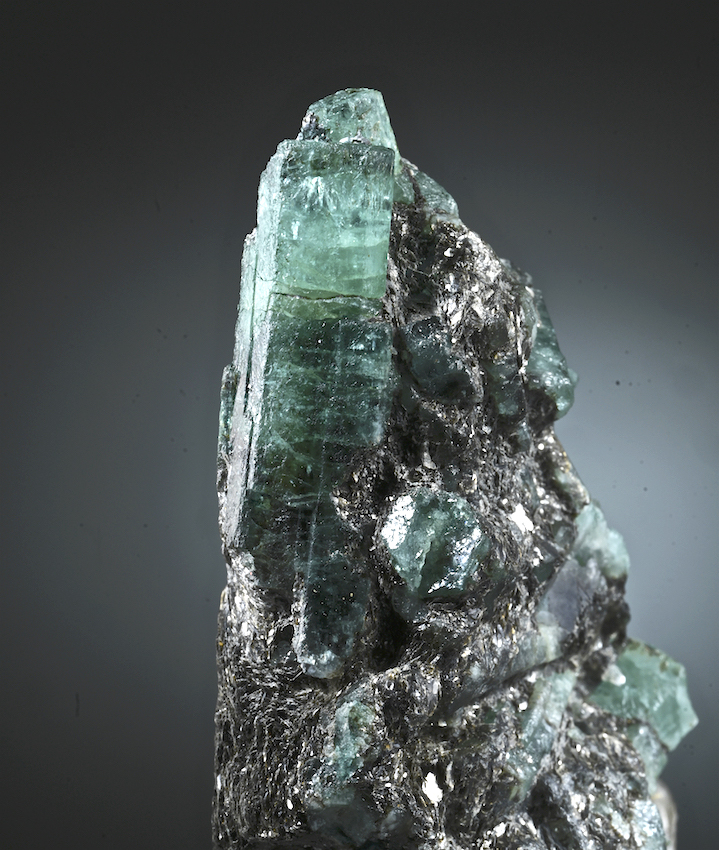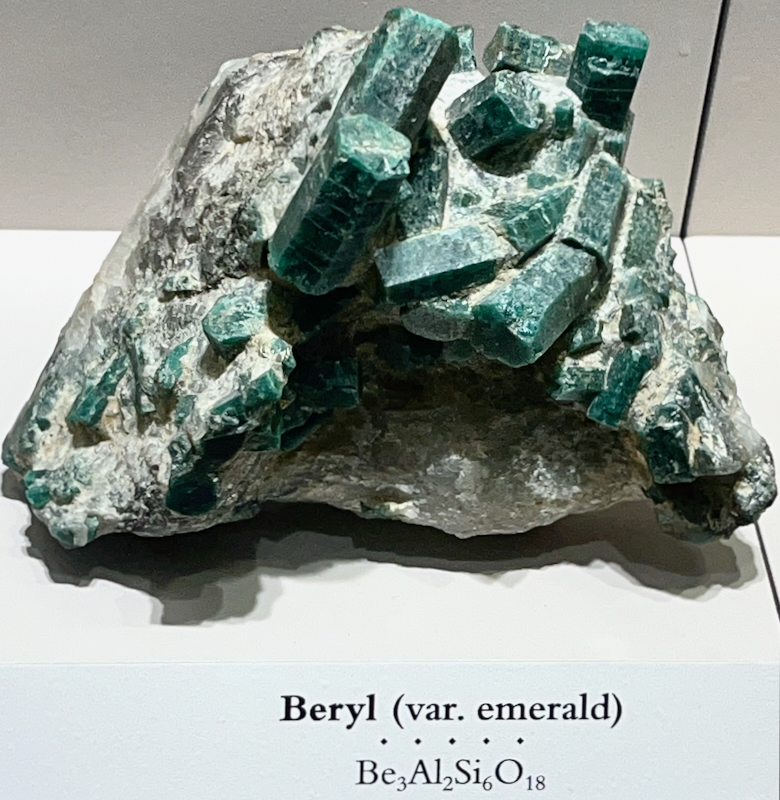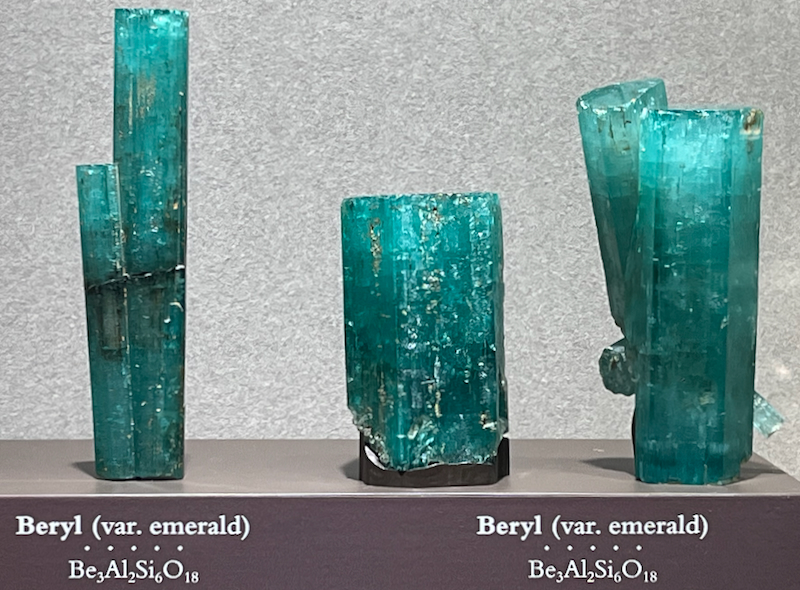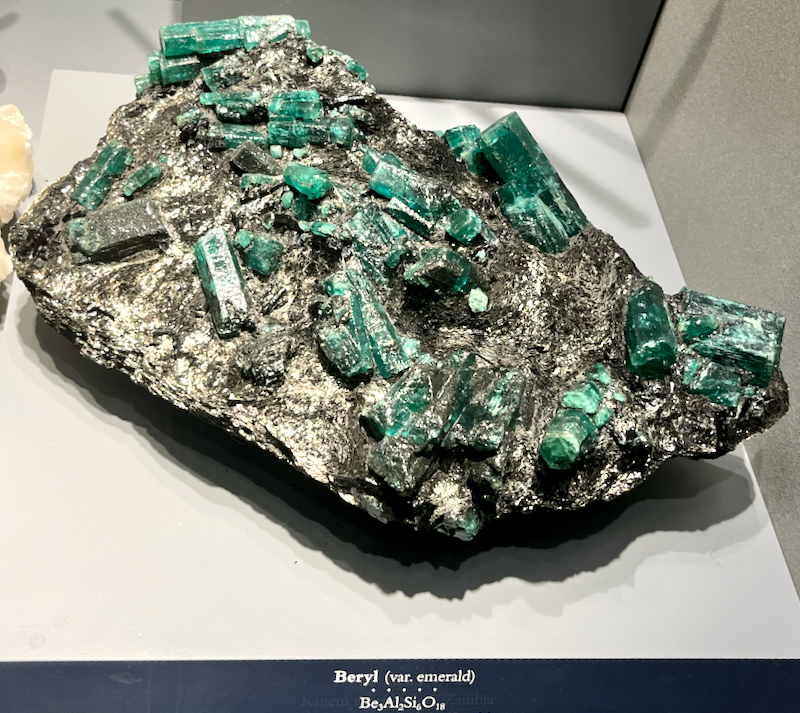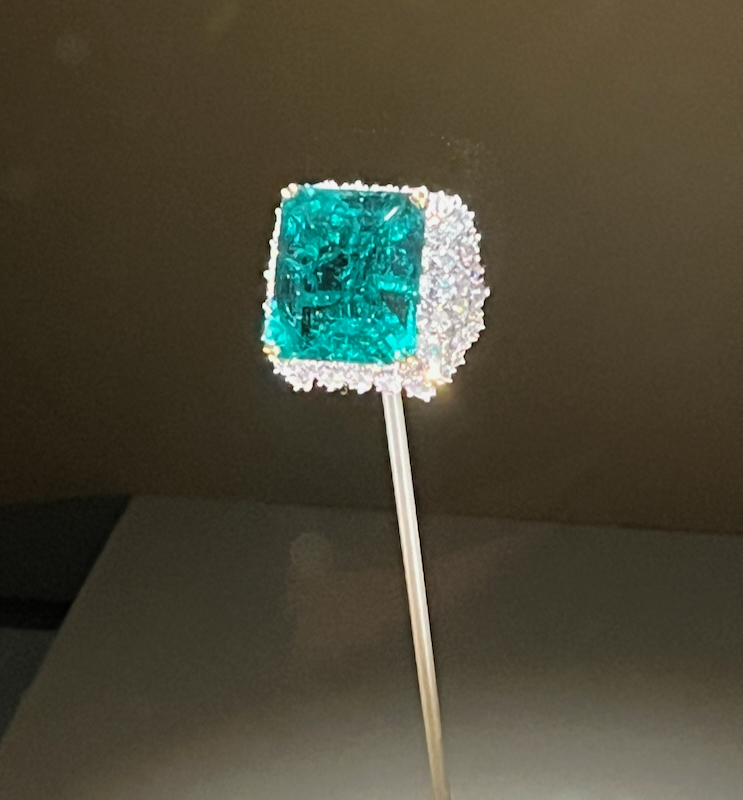Emerald
If you’ve ever read or seen The Hunchback of Notre-Dame, you may remember a character named Esmerelda. Given the mineral we’re talking about, you may correctly guess that Esmerelda comes from the word “emerald.” Now that’s not because people named Esmerelda have green skin, but because they’re supposed to be as beautiful as a gemstone. According to the etymology (word history) in Webster’s Dictionary, the word that became “emerald” in the end also originally just meant “gemstone,” but eventually it came to have its current, more specific meaning. The earliest emerald mines we know of were in ancient Egypt, thousands of years ago, whereas today most emeralds come from the Muzo area in Colombia, an area also known for its special chisel-tip “Muzo habit” quartz crystals. However, they’ve also been found in less exotic locations, such as North Carolina. Although it’s one of the rarest and most valuable gemstones, emerald isn’t even a separate mineral. It’s a variety of beryl that has a tiny amount of chromium in it that makes it a very special shade of green. Fortunately for rock collectors, emerald also can be opaque, and it’s very affordable if that’s the case, so you too can own an emerald!
| Formula | Group or Type | Shape | Hardness | Specific Gravity | Streak | Luster |
|---|---|---|---|---|---|---|
| Be3Al2Si6O18 | Beryl | Hexagonal | 7.5–8 | 2.63–2.92 | White | Vitreous to greasy |
